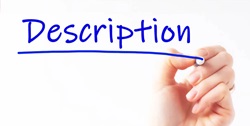What is DMCA TakeDown?
A DMCA Takedown is when content is removed from a website or internet platform at the request of the owner of the content. The DMCA Takedown is a well-established and accepted internet standard followed by website owners and internet service providers everywhere.
Your right to process. Any owner of content has the right to process a takedown notice against a website owner and/or an Online Service Provider (e.g. ISP, hosting company, etc.) if the content owner’s property is found online without their permission.
Although the DMCA is part of US Copyright law, a DMCA Takedown does not always require the content to be copyrighted in order to process a takedown notice and for the content to be taken down by the website owner or OSP.
The fact the content is yours, or if the subject in the photo or video is you, can be reason enough to process a takedown notice and for the content to be taken down.
RankGrabby Fast Tip
It is important to act quickly. Often stolen content is redistributed to many websites for republication. Try and get a list of as many websites or platforms where your content may have been republished without your permission.
Detailed Overview Of the DMCA Takedown Process
1. The DMCA And Its Purpose
In 1998, the Digital Millennium Copyright Act (DMCA) was established by the United States Congress to modernize the country’s copyright laws in the digital era. The DMCA was a response to the development of e-commerce websites and the need to fulfill the nation’s treaty obligations regarding copyright law. The purpose of the DMCA is to prevent widespread piracy of creative works, such as videos, photographs, graphics, and technology, on the internet.
2. The Act
DMCA 17 USC 512 (c) (3) is a section of the US Copyright Act that outlines the requirements for the “DMCA Takedown” process to take place. DMCA Takedowns are a “notice-and-takedown” process that requires OSPs and ISPs to remove access to alleged infringing material upon receipt of a valid DMCA notice from a copyright owner. Failure to comply with the DMCA Takedown Notice puts the OSP/ISP at risk of losing their statutory immunity or “Safe Harbor” protection under the Act.
3. The Law
The DMCA addresses the role of Online Service Providers (OSPs) and Internet Service Providers (ISPs) in responding to reported copyright infringement through the use of their services. To avoid liability for any copyright infringement, ISPs and OSPs must block access or remove the infringing content upon receipt of a DMCA notice from a copyright owner.
4. DMCA Takedown Process
Once the alleged infringing content is removed, the infringing party has the option to file a Counter Claim in response, stating under penalty of perjury that the DMCA Notice is false. The OSP/ISP must wait 10-14 days after receiving a valid DMCA Counter Claim before reactivating or allowing access to the claimed infringing content. The claimant who filed the DMCA Takedown Notice must then file a court order against the infringing site owner and the OSP/ISP if they wish to keep the infringing content offline.
5. DMCA Takedowns And Copyright Protection
The DMCA Takedown process is a critical tool for copyright holders to protect their creative works in the digital age. It is important for OSPs and ISPs to comply with DMCA Takedown Notices to avoid losing their statutory immunity and legal protection under the Act. The DMCA also ensures international copyright protection for copyright holders in other countries.
DMCA Takedown Options
RankGrabby Has Two main Options To File Your Takedown Request
1. Professionally Managed Takedowns
The RankGrabby takedown professions handle all the necessary tasks, including research, contacting the website owner and ISP, and sending the takedown notice. To get started, all that is needed is the Infringing (URL), Source (URL), and specific copyright infringement details. The takedown team will take care of the entire process, tracking it until the takedown is successfully completed. The cost for this service is $199.00 per infringing website, which covers up to 25 infringing URLs from the same site.
2. Protection Pro Toolkit Do-it-Yourself (DIY) Takedowns
This option is designed for webmasters and internet professionals. RankGrabby provides all the necessary tools and templates to complete the takedown notice, but you are responsible for conducting the site research, tracking, and emailing. The cost to access the tools and templates is $10 per month or $100 per year. This service provides everything needed to conduct an unlimited number of self-managed takedowns.
What Do You Need To Provide For a DMCA Takedown?
1. Infringing URL
You will need to clearly show what has been stolen from you and where it needs to be removed from. If it is showing in search engines or has been published on someone else’s website, be sure to provide the page and image URLs or copy the text to show the exact theft. If it is on a social media profile, be sure to provide the exact content link.
2. Source URL
You will need to provide the URL where your content was stolen from. If it was stolen from your social media profile, dating profile, or website page, make sure to provide the exact page URL as well as the image URL or the original text if needed to show the exact content. If it was not online you can reference cell phone, computer, camera, etc. If it was online such as a website or cloud storage provide the link to the exact page it was stolen from. You can upload the original content to a cloud storage service and provide that URL with an explanation of where it was originally stolen from.
3. Detailed Description
You will need to provide context and make the request for what you want removed. Make sure to be clear, concise, and firm in your request. An example would look like:
“This infringing website has stolen my original image and published it without permission. Please remove my image immediately.”
If you need assistance collecting this information for your takedown request, please reach out to our support team to;

Who Can File Takedown Requests?
Many different types of content owners are able to file takedown requests, here’s a list of examples:
- YouTubers
- Content Creators
- Musicians
- Business Owners
- Artists
- Models
- Product Manufacturers
- Social Media Users
- And many more.
What Kind Of Websites Will Process DMCA Takedowns?
Infringing Content is Removed From Many Different Websites And Platforms
- From a UGC (User Generated Content) Platform (like Facebook and TikTok), upon receipt of a DMCA Takedown Notice sent by or on behalf of the infringed content owner, distributor, publisher, etc.
- by the website owner, upon receipt of a DMCA Takedown Notice from the website owner’s ISP / Hosting company. This would occur when the ISP / Hosting company receives a notice sent by or on behalf of the content owner, distributor, publisher, etc.
- by the website owner upon receipt of a DMCA Takedown Notice from the, or on behalf of, the content owner, distributor, publisher, etc.
- by the ISP or Hosting company of the website that is publishing the infringing content. This occurs because the website owner has not voluntarily complied with a DMCA Notice and the ISP or Hosting company must comply with the Takedown notice.
- when an infringing website is taken down or taken “offline” by its ISP or Hosting company. This occurs because the website owner does not voluntarily comply with a Takedown notice as described above.
These Takedown actions occur upon receipt of a DMCA Takedown Notice which uses stipulations laid out in the Digital Millennium Copyright Act. (DMCA). This Act directly addresses the take down of (copyright) infringed content from a website that is publishing content in violation of the copyright protection act or content being used without permission or not in accordance with the sworn statement of the content owner.
What Countries Use Takedown Notices?
Most countries accept the standard DMCA Takedown Notice form and process. Although the DMCA Takedown is part of US Copyright law, a DMCA Takedown Notice is often used and accepted throughout the world and is not exclusive to the United States. However, many countries have their own copyright laws specifically related to the removal of content from internet service providers and site owners within their borders. Service providers do and do not accept the standard DMCA takedown notice form and the process is dynamic and constantly changing. RankGrabby professionals are aware of these constant changes and are able to convert the information submitted through the standard DMCA Takedown signup form to suit specific countries and/or service providers within the legal process they require.
